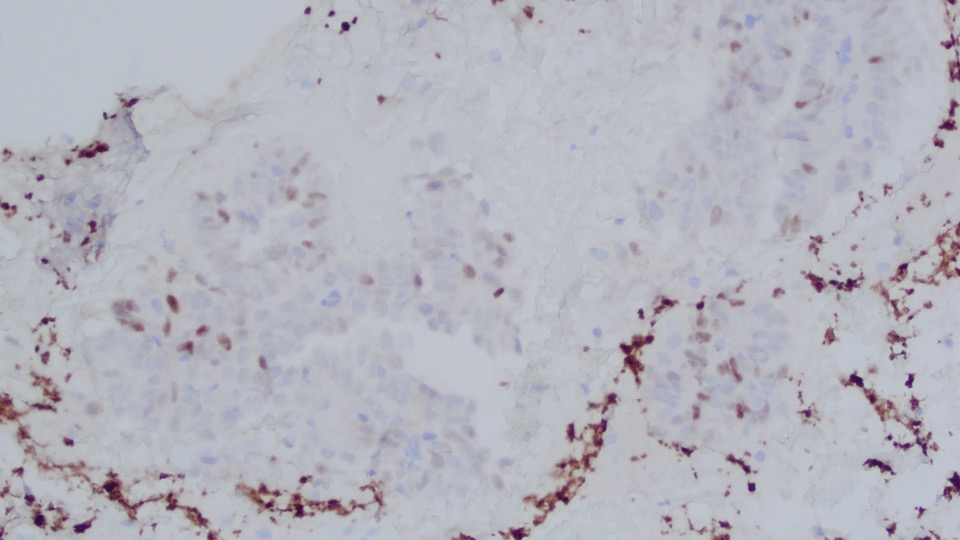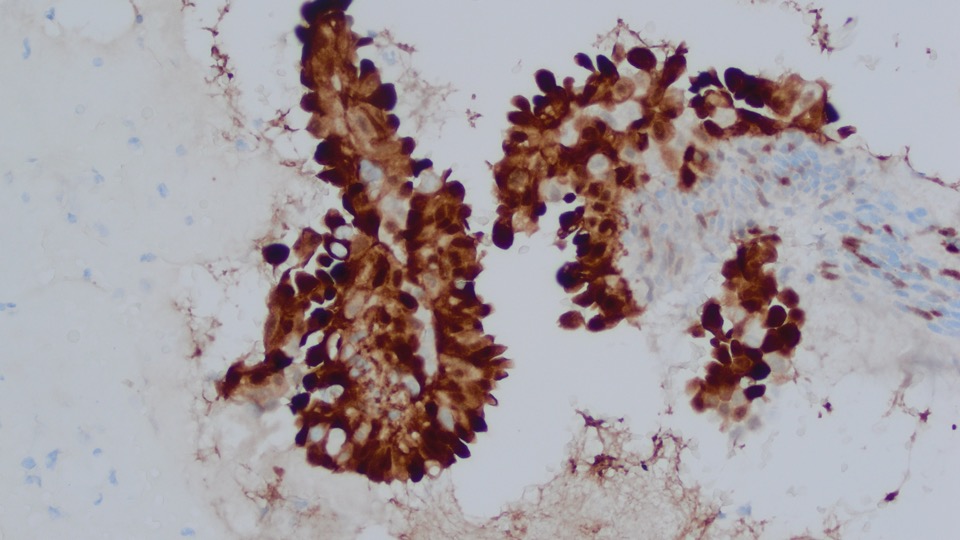Case History
50-year-old female endometrial currettings due to abnormal uterine bleeding. Patient has a history of triple-negative breast cancer.




What is the best diagnosis?
A. Serous carcinoma
B. Papillary/eosinophilic metaplasia
C. Clear cell carcinoma
D. Metastatic carcinoma
Answer B. Papillary/eosinophilic metaplasia
Discussion
Endometrial curetting specimen show detached aggregates of exuberant architecturally simple papillary/pseudopapillary proliferation of the endometrium.
The papillary proliferation is positive for PAX8 (strong), ER (strong scattered), and p16 overexpression; and negative for Napsin A and AMACR. p53 shows wild-type expression pattern.
Papillary proliferation of the endometrium (PPEs) is an uncommon lesion characterized by papillae with fibrovascular stromal cores covered by cytologically benign epithelium. The changes are closely related to hormonal treatment, endometrial polyps, and epithelial metaplasias.
Study indicates that localized and architecturally simple PPEs confined to a completely removed polyp are usually associated with a benign outcome.
Reference: Am J Surg Pathol 2013;37:167–177
Case contributed by: Hua Guo, M.D., Associate Professor, Women's Health, UAB Pathology